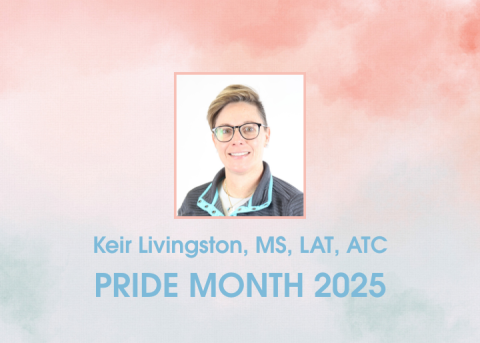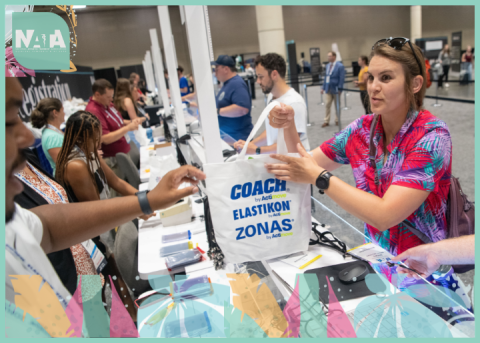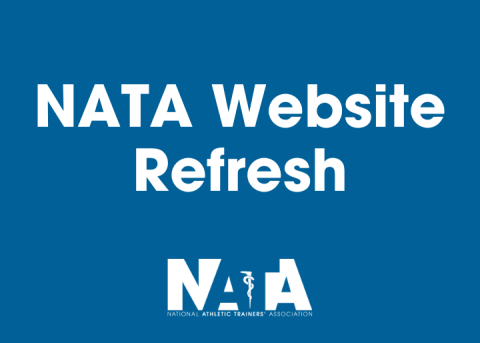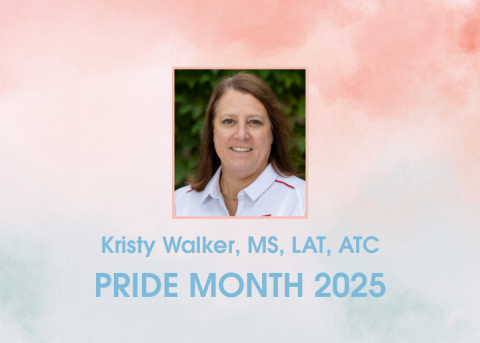
In the February NATA News, the monthly Built for This article, which highlights the domains of athletic training, featured two ATs who sprang into action during emergencies to save lives (read more on p. 20 of the issue). Thanks to Domain Three, immediate and emergency care, ATs are able to face lifesaving situations at a moment’s notice. In continuation of highlighting the lifesaving efforts of members, Ellen Kelly, MA, ATC, from District Eight, shared her story about saving her basketball coach’s life during a night of chaos Jan. 2020.
Explain the moment when you had to spring into emergency action. What were you doing before, during and after the accident?
I was sitting behind my bench, and there were students on the second bleacher at a high school in south Los Angeles during our basketball game. We had to play a late game on a school night. It was during the fourth quarter with less than a minute left, and we were down by a shot to tie and go into overtime. It was a nail-biter the entire game. I was watching the game when suddenly, one of my students yells my name and points to my head boys’ basketball coach on the ground lying supine with his eyes open but motionless inches away from the scorer’s table. Somehow, I flew to his side as I don’t recall stepping on a bleacher, let alone the ground.
By the time I got to his side, there was a man who was by my coach’s head and tapping him. I immediately went into emergency-action-plan mode and began to check for responsiveness. After establishing my coach was unresponsive and had no pulse, I was assured that the ambulance was called. I instructed my students to give me my medical kit and automated external defibrillator (AED), which I always travel with and keep next to my kit.
As I was removing my coach’s tie and dress shirt, I unexpectedly paused and realized what was happening – that someone’s life was in my hands. I felt more pressure because it was someone for whom I cared about immensely.
I looked up expecting to see my students who ran to get my kit, but instead, I saw a mass of people staring at me. Unbeknownst to me, a gang fight had ensued outside by the gym entrance. Apparently, there were a few young people also fighting in the bleachers. Due to the chaos, there was still a crowd of people inside the gym seeking safe shelter. Despite the coaches and staff’s efforts, there were people blocking the path between me and my students.
My students eventually fought through the crowd and tossed me my equipment. By now, several other people (nurse, coaches and psychologist) were with me offering to help. As I cut open my coach’s undershirt, another woman was unpacking my AED pads and my students ran outside through the back door to flag down and guide the ambulance. One man did rescue breaths while I and others did chest compressions.
After doing four rounds of chest compressions and breaths and administering a shock four times, my coach, thankfully, gained consciousness. This happened just as the paramedics were coming through the door. One of the paramedics thanked my students for coming to get them because the dark sky and chaos outside did not allow them to find a safe entry point in the front of the building.
As an American Heart Association First Aid and CPR instructor, these steps are something I practice several times a year. However, once the real adrenaline is released, one can’t be sure what your sympathetic nervous system will allow you to do. I can definitely attest that all the practice over the years and EAP drills we do at Team HEAL (Helping Enrich Athletes’ Lives) definitely helped me stay focused on the task at hand.
After the ambulance left, I, fellow staff members and several of our male student athletes began walking back into the gym. However, a few teenage boys approached our male student athletes and were threatening them. Again, my sympathetic nervous system ignited, and I instinctually grabbed a hood and collar of my male student athletes. I used my grip for leverage to propel myself forward. I found myself standing between my male student athletes and these teenage boys. Luckily, the incident was quickly resolved as Los Angeles Police Department officers made their way to the back of the gym where we were standing.
I was finally able to gather my things and drive back to our campus. The other coaches and I made sure all of our students were on their way home. However, before going to the hospital, I went to get fast food and just sit in my car to decompress. By now, it’s midnight. My work day starts at 8 a.m. because I am a full-time career technical education teacher with a sports medicine program.
When I get to the hospital, where other coaches and family members were gathered, I received the great news that our basketball coach was going to be OK. He just needed time to rest and recuperate. I also reached out to our administration and asked them if our counselors could arrange something for our student athletes the following day. After all, this was a scary and traumatizing event for everyone involved, especially with the gang fight compounding our coach’s collapse. It was the longest night of my life, and I barely slept probably due to all of the adrenaline.
I was back at school the next morning mainly to assure all of our student athletes were coping in a healthy way. On this day, a few of my coaches and students complimented my determined performance, especially among the chaos. I assured them that I simply did my job. However, I will never forget the desperation I felt while I was counting out loud during my initial set of compressions. I silently begged God to let my efforts be enough.
What did you learn from the emergency?
I learned that my sympathetic nervous system will fight and that my students are truly amazing. In addition, my faith in my school’s administration and counseling staff was reinforced. I have extremely supportive administrators as well as outstanding counselors and psychiatric social workers at my high school. Mental health has always been emphasized at my school. I also learned that getting more ATs in high schools is more imperative than I realized. I was not supposed to go this game since I had a girls’ game at home; however, since they changed it to a night game, I was able to go after my girls’ game. I don’t know what would have happened if I didn’t go to this game and am glad everything worked out in the end.
What advice would you give an AT who hasn’t been through this type of emergency?
Practice makes perfect, so practice, practice, practice! Make sure you have an AED and, if you don’t, bring your own like I do. Make sure you know exactly where one is and that it is quickly accessible to you. Also, make sure you have extra pads and batteries to replace the one’s you used. Maintain the standard of doing routine equipment checks and practice your EAP with your coaches and administrators.
High school sports, especially those without an athletic trainer, need to assure that they have an AED accessible for all practices and games and for every location and coach. They can’t be locked up in the nurse’s office or front office. This need is heightened as we are now in the realm of COVID-19 and the potential for myocarditis is precariously upon us.
ATs Care is Here
Assisting in emergencies, regardless of outcome, can be traumatic and strenuous for athletic trainers. The ATs Care program is designed to offer crisis management training opportunities for athletic trainers dealing with the aftermath of a critical incident. The mission of the NATA ATs Care Commission is to aid ATs and athletic training students who have been through a critical incident by utilizing a peer-to-peer system to assist, monitor and encourage these individuals to seek initial support through state or regional ATs Care teams.
Contact ATs Care online to be connected with an ATs Care member near you. Learn more about ATs Care on the NATA website.





